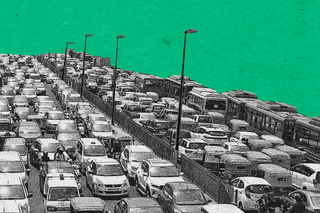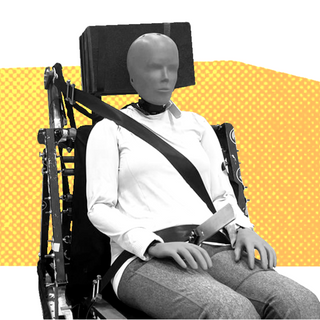
Automobile Emissions Are Top Cause of Air Pollution in Delhi: Report
The study highlights why governments must take action to restrict vehicular use to curb pollution and global warming.

An analysis by the Centre for Science and Environment (CSE) holds emissions from cars and other vehicles in Delhi as the single-largest contributor to air pollution in the capital, The Indian Express reported. The report comes at a time when the capital experiences severe pollution, with the city’s Air Quality Index repeatedly crossing to “severe” in several areas of the city — and points to a crisis in public transportation.
Between October 21 and October 26, the period of the aforementioned analysis, emissions from cars and other vehicles made up about 51% of the city’s PM 2.5 — inhalable microscopic materials less than 2.5 micrometers in diameter — concentration. The report highlights the scale at which fossil fuels — and private transport powered by them — are responsible for air pollution.
In 2021 too, vehicular emissions were responsible for more than half of the city’s early winter air pollution in a CSE report. In 2018, a joint study by The Energy and Resources Institute (TERI) and the Automotive Research Association of India (ARAI) found that vehicles were responsible for more than 40% of the city’s air pollution. This shows how the 13.2 million registered vehicles (as of 2021) in Delhi have been consistently responsible for the city’s pollution. Indeed, the cleanest Delhi air was observed during the two pandemic-induced lockdowns in the summers of 2020 and 2021 when the state limited mobility.
Winters in India’s capital are near-synonymous with deadly air pollution. The adverse effects of this pollution on people’s health and well-being have been well documented. In 2021, for instance, early winter pollution in Delhi led to the government shutting down schools for a week. Air pollution in South Asia is also a major driver for anemia in kids, miscarriages and infant mortality, and mental illnesses such as depression.
The number of vehicles in the capital doesn’t correspond to the size of its population, showing how a small proportion of the population has an outsized contribution to the air pollution crisis. According to data obtained in the latest cycle of the National Family Health Survey, only a small proportion of families residing in Delhi own cars — 19% in its rural areas and 28% in its urban centers. Yet, Delhi streets are often congested by this small proportion of car-owners.
Related on The Swaddle:
Smog in Delhi Leads to Pandemic‑Like Lockdown for a Week
Public transport, then, is the only viable long-term option. This, however, is hardly the case in Delhi. Despite a seemingly strong network of buses and metro rail connectivity, Delhi was listed in the Ease of Living Index 2020 as the second worst city in terms of public transport connectivity. For every one lakh population, Delhi had only 1688.5 available modes of public transport to choose from. In the best performing city, Chennai, there were 92,017.96 available modes of public transport for every one lakh people. This highlights how Delhi’s public transport options are largely inadequate — compelling people to depend on either private personal vehicles or on commercial personal vehicles such as cabs and auto-rickshaws, resulting in higher emissions per person. In a city with close to 20 million residents, this translates to vehicular emissions on a massive scale.
The current state of Delhi’s public transport remains dismal. There are only 270 buses per million population running in Delhi. Beijing, a capital city with a similar population size, boasts of a bus fleet more than 60 times Delhi’s size. Other cities around the globe, such as Sao Paolo, Seoul, and Dubai, also account for much stronger fleets than Delhi’s; the highly advertised Delhi Metro claims a daily ridership of only about 2,700 persons.
The Delhi metro has also been recognized globally as the second-most unaffordable public transport system of its kind in the world. An Economics Times report on the unaffordability of the Delhi Metro notes, “an unskilled daily-wage laborer in Delhi spends an average 8% of his income by traveling on a non-AC bus, 14% for an AC bus and 22% on the Delhi Metro.” However, instead of recognizing the unaffordability of the service and reducing fares to make the system more accessible, the Delhi Metro Rail Corporation has instead criticized such studies and also hiked fares in the recent past.
Developing public transport to improve last-mile connectivity, reducing fares to make it more affordable to a larger population and strengthening fleets to cater to a larger population, all remain key steps through which the administrative powers in Delhi can reduce the use of personal vehicles in the city. In the long run, this would not only lower emission levels but also make the city more easily accessible to the large population of the city that doesn’t own a vehicle.
Amlan Sarkar is a staff writer at TheSwaddle. He writes about the intersection between pop culture and politics. You can reach him on Instagram @amlansarkr.
Related


The First Female Crash Test Dummy Is Here. Why the Delay?
